8/3/2008 Diary Start
It seemed as if the Canon Rebel XSi/450D was the upgrade for the Canon Rebel XTi/400D. It turns out that with the new Canon Rebel XS/1000D we have a camera slightly above the XTi/400D and below the XSi/1000D. All three cameras share many features. Lets have a look at some more meaningful differences.
| Feature |
XS |
XSi |
XTi |
| |
|
|
|
| Mega Pixel |
10 |
12 |
10 |
| Live View |
yes |
yes |
no |
| Frames per second (fps) |
3 |
3.5 |
3 |
| Highlight Priority / 14 bit |
no |
yes |
no |
| LCD size |
2.5" |
3.0" |
2.5" |
| Viewfinder |
|
slightly larger |
|
| My Menu |
yes |
yes |
no |
We liked the Rebel XTi/400D a lot and the Rebel XSi/450D is a good improvement. This means that the Rebel XS/1000D is to be expected to be a fine camera too. Look at the features and your budget. All three cameras are not a wrong choice.
We would opt for a XS or XSi because of the Live View. It helps to avoid the classic Canon "Mirror up" hassle and you can easily use manual focus on a tripod. 12MP will give you slightly more resolution but 20% more is not the world.
Los Gatos test shots
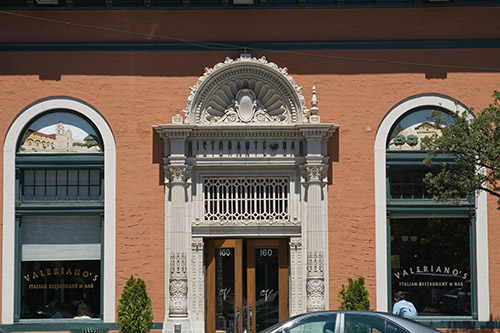
Ristorante @ISO 100

Crop @100% magnification
We used for this test our 24-105mm f/4 IS zoom. Shows excellent detail. Nothing to complain. Just amazing what this budget camera can deliver.
You can download the original RAW from here (about 11MB).
Note: Remember that the service we provide is financed
by selling our ebooks and PS
tools. Also direct donations are welcome.
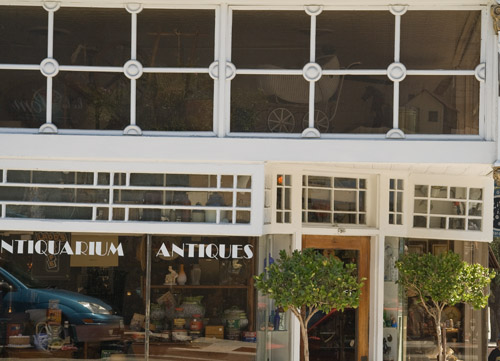
Antique store @ ISO 400
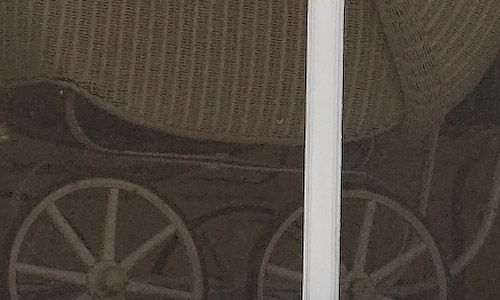
@ 100% magnification
Excellent result at ISO 400 (our EasyD Detail Resolver brings even out the grain some more).
ISO Test
We converted with ACR 4.5 (luminance noise
removal set to zero) and then sharpened with the same level in Detail Extractor 2.0 and some low EasyS Plus settings.
Note: Detail Resolver shows both more detail and more grain. This way we can see how much real detail is available.
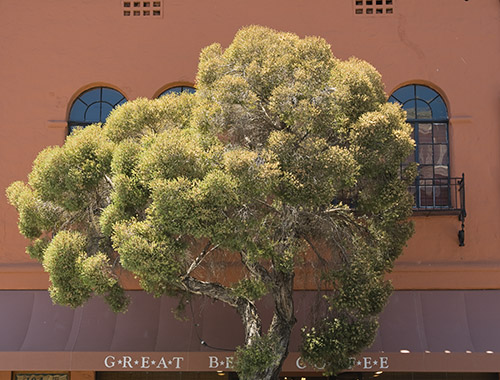
Bear Coffee Shop
Canon Rebel XSi/450D |
| |

ISO
100 |
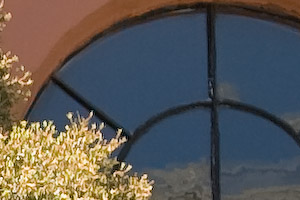
ISO
200
|
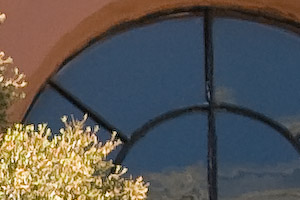
ISO 400 |

ISO 800 |
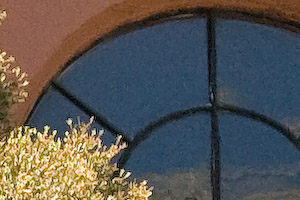
ISO 1600 |
All these shots are with luminance noise removal off in camera
(as much as the user can control this) and raw converter (color noise removal was at default). ISO 100-200 very smooth with hardly any noise.
ISO 400 is nearly as good as the ISO 200 shot. ISO 800 shows a bit more noise but still very good. Even ISO 1600 is what we got in the past at ISO 800. With this excellent noise behavior we wonder why Canon left ISO 3200 out (don't worry, just underexpose by 1 EV and you get an equivalent of ISO 3200).
The Canon Rebel XS/1000D shows a very good ISO performance.
Note: Because we use now also the DOP EasyD Detail Resolver (with noise protection "on") noise would actually be even more visible than in the past.
With most cameras today we feel that ISO 100-400 defines our comfort zone. This means we use this range without any further thought (unless you plan to print very large or have to deal with very deep shadows). With the Canon Rebel XS/1000D we can risk ISO 800 or 1600 more often than not.
Note about high ISO noise: Many people ask why they should worry about noise at ISO 800 or more if they only use 400 ISO at max. This is of course a good question. In the past we did not care either. Then we changed our photographic style and make now often use of Tonemapping (learn more about HDR and Tonemapping). During this process we brighten the shadows and this brings out the noise otherwise seen at way higher ISO. It often starts to matter at even ISO 200 photos.
Note about frame rate: We hardly photograph action and still we find the high frame rate very important. Why? We shoot high speed exposure brackets freehand. Please read this article for our motivation behind high speed brackets. We find that the Canon Rebel XS/1000D at about 3 fps is a on the slow side but should still work for our new technique just fine. We used the Canon 5D, 450D and 400D in the past with good results (all in the same 3-3.5 fps ballpark).
What about the Kit Lens?
The Canon EF-S 18-55mm IS is optically a nice lens (especially for the price). Mechanically it is a lot of plastic for a lens "gourmet" :-). Hard to beat as a compact and cheap travel lens.
You can download an original RAW with the kit lens (Ristorante) from here (about 10MB).
On the other side the Rebel XS/1000D is good enough to show how good your lens is.
First conclusions
- Excellent high ISO noise behavior
- Live View is very useful
- Viewfinder slightly smaller than the XSi but ok.
- Canon Rebel XS/1000D has full support for AEB (Auto Exposure Bracketing)
- Excellent value for the money
Our wish list
- Have a secondary dial
- ISO 3200 setting
- ISO in 1/3 increments
- Swivel LCD
This sounds much like the Canon Rebel XSi/450D review. Right, these cameras are very close. But the judgment is based on the pictures taken with the Rebel XS/1000D.
|